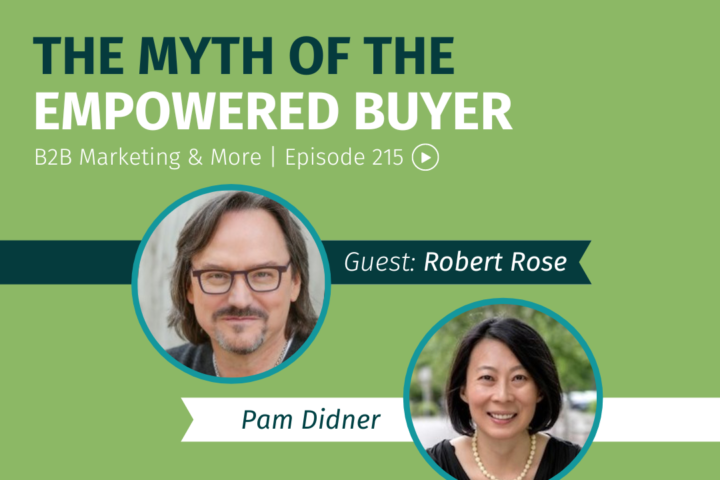
Andi who attended my Global Content Marketing Workshop at Content Marketing World sent me this question:
Pam, I am sitting here going through my notes from CMW highlighting what I need to take action on when I get back to the office and I have highlighted so much from your presentation! I do have one question – do you have a recommendation on how to transition from a traditional marketing program to a content program without it being jarring for the audience?
Ok, first of all, Andi, this is a, what I call, a holy-grail question. If I completely crack the nut, I’d say that I am the chosen one who knows the untouchable secret.
Here are my two suggestions on how you can approach this. One is to tackle it from the marketing end; the other approach is work from the sales side. So hear me out.
Tackle from marketing:
- The first step, you need to do your homework. Understand how the existing marketing programs work and perform. What traditional marketing programs or campaign have the company tried? How did they do? Is the marketing team happy about it? If not, why not?
- Take the insights you gather and identify some opportunities where content marketing can help. If the internal resistance on content marketing is high, start small. If people are open to new ideas, well, suggest or recommend something with a bigger scope.
- Propose the ideas or your recommendations to senior managers to get their input. Communicate from the perspective: “Ok, here are a couple of things which are not working well in traditional marketing. Maybe we can try or pilot something and see how it may help or improve the existing traditional marketing elements. Use the word pilot so that you don’t come out looking as if you’ve proposed a massive change.
Andi, I don’t know what traditional programs are not working in your company. Assume, you do a lot of events, marketing managers gather many business cards, and the event team passes them to the sale teams, but salespeople won’t follow up. Maybe content can be used as a means to nurture the prospects. If the prospects click on specific types of content such as a buying guide or a feature comparison list, the information may serve a clue that the prospect may be ready to move on to the next stage. Then, you can pass that lead to the sales team, because you qualified it.
Another example: maybe your company is still doing a lot of traditional paid ads, they don’t know how to do paid efforts on social media. Maybe you can do some research on where your target audiences go and propose social media outreach campaigns. Again, it’s a pilot. Make it 3-6 month program and have the specific performance metrics tied to the campaigns.
OK, another approach is to leave the existing traditional program as it is and tackle content marketing from the sales side:
Tackle from the sales side:
- Say, your marketing team would like to continue with traditional marketing, that’s fine. Leave the way it is. You start with your sales team by understanding their needs and concerns. The most important thing is to understand their sales processes and methodologies.
- Draw their processes and identify the types of content they may need for each stage.
- Source content that will help them share your content recommendations with them and ask if these content pieces are something they will use. They will tell you yes or no. Start with 5-10 salespeople, if your sales team is big.
- Identify the missing gaps where the existing content can’t meet their needs.
- Propose a plan to create content for the sales team. If you don’t have a budget, ask them if they can cough up some budget to help you. Again, start small.
I tried this approach with my sales team before, and I got the budget I needed to create some sales-centric content for them.
So, a quick summary of the two approaches, Andi:
One approach is to understand how existing traditional marketing program works and performs. Find the gaps and see how content marketing can fulfill the gap.
The other approach is to understand the sales team’s needs and see if you can provide content to address their needs.
I am sure that they are other ways to address your questions. If you provide additional information, maybe I can come up with additional ideas, OK?
In the meantime, I hope this helps. Good luck, Andi!
Again, send me your marketing questions and thoughts here or via Twitter @pamdidner.



